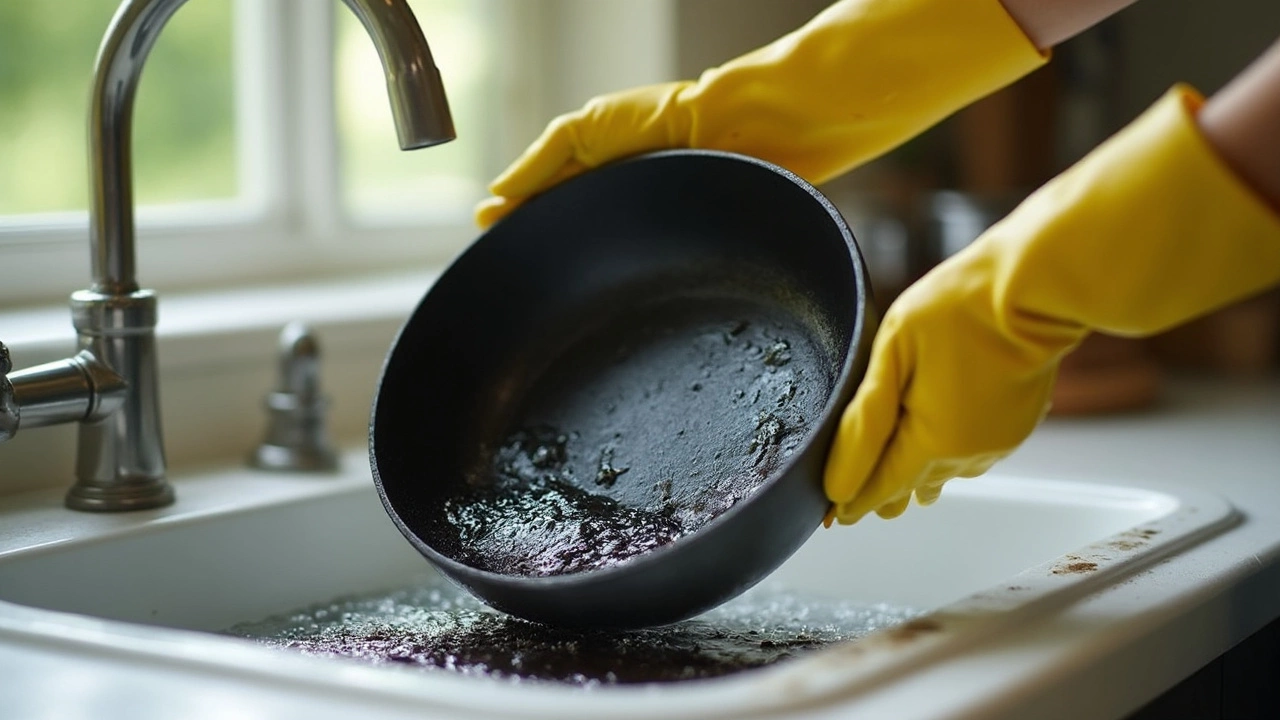Burnt Residue – Simple Fixes for Kitchen Messes
If you’ve ever scrolled through a recipe and ended up with a blackened pan, you know how frustrating burnt residue can be. It sticks, it looks ugly, and it smells like a campfire gone wrong. The good news? You don’t need pricey cleaners or endless scrubbing. Most of the time, a few kitchen staples and a bit of patience are enough to bring that surface back to life.
Everyday Ingredients that Cut Through Char
First up, grab some baking soda. Sprinkle a generous layer over the burnt area, add a little water until it forms a paste, and let it sit for 15‑20 minutes. The mild abrasive works like a gentle sandpaper without scratching most surfaces. After the wait, scrub with a non‑metal sponge and rinse. For tougher spots, swap the soda for white vinegar. Heat a little vinegar in the pan, then add the soda paste – the fizz helps lift the residue. A squeeze of lemon juice works the same way and leaves a fresh scent.
Surface‑Specific Tricks
Not all cookware reacts the same. For non‑stick pans, avoid metal scrubbers; use a soft sponge with the vinegar‑baking soda combo and rinse promptly to keep the coating intact. Cast‑iron lovers can tackle char with a coarse salt scrub and a bit of oil – the salt does the work while the oil protects the seasoning. Ovens and grills can be rescued with a spray of water mixed with a splash of dish soap, then covered with foil and left to steam for 10 minutes. The steam softens the burnt bits, making them easy to wipe away.
Another tip: if the residue is really stubborn, fill the pan with water, add a few slices of onion, and bring it to a gentle boil. The onion releases natural sugars that help loosen the char. Once the water cools, wipe clean. It’s a trick chefs swear by and it uses ingredients you already have.
Remember to always test a small hidden spot first, especially on delicate surfaces. This way you know the method won’t damage the finish. After cleaning, give the area a quick rinse and dry it thoroughly – moisture left behind can cause new spots to form.
So the next time you see that black ring on your favorite pot, don’t panic. With baking soda, vinegar, lemon, and a little know‑how, burnt residue becomes a minor inconvenience rather than a kitchen nightmare. Keep these tricks in your back pocket and enjoy a cleaner, brighter cooking space without breaking the bank.

Black Stuff on Pan Bottoms: What It Is and How to Deal With It
Ever turn over a pan and find a stubborn black layer clinging to the bottom? This isn't just burnt food—it's a mix of carbonized grease, oils, and sometimes even chemical reactions from cooking. That black stuff can mess with your food flavor and even shorten the life of your cookware if ignored. This article breaks down what causes it, how it builds up, and most importantly, how to get rid of it. Say goodbye to scrubbing frustration and hello to pans that last longer.
Categories
- Storage (27)
- Bathroom (18)
- Sofas (15)
- Curtains (15)
- Home Decor (12)
- Bedding (11)
- Kitchenware (11)
- Cushions (11)
- Mirrors (10)
- Rugs (9)
Popular Articles

Best Type of Bedding: What Actually Matters Most
May, 8 2025


